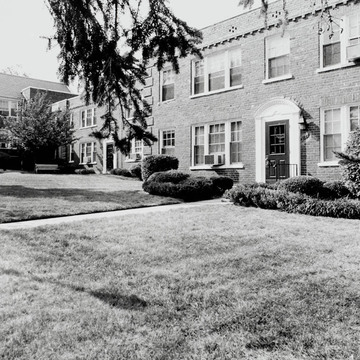The oldest of the northern Virginia garden apartment complexes was also the first Federal Housing Authority project in the nation. The FHA worked closely with Washington
You are here
Colonial Village
1935–1940, Harvey Warwick, Frances Koening. Bounded by Lee Hwy., Queens Ln., N. Veitch St., and Wilson Blvd. (Courthouse Metro stop)
If SAH Archipedia has been useful to you, please consider supporting it.
SAH Archipedia tells the story of the United States through its buildings, landscapes, and cities. This freely available resource empowers the public with authoritative knowledge that deepens their understanding and appreciation of the built environment. But the Society of Architectural Historians, which created SAH Archipedia with University of Virginia Press, needs your support to maintain the high-caliber research, writing, photography, cartography, editing, design, and programming that make SAH Archipedia a trusted online resource available to all who value the history of place, heritage tourism, and learning.

